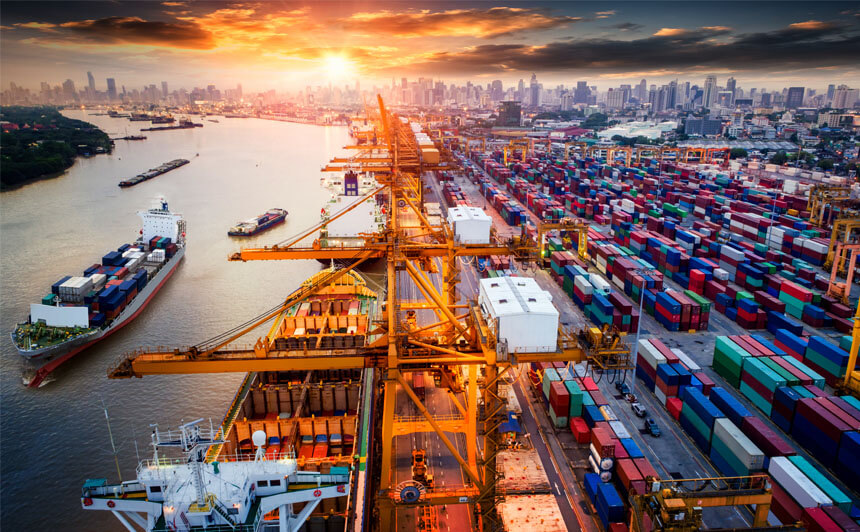After the pandemic supply chain crisis, how can SCDs mitigate the risks of another logistics crunch?
From empty supermarket shelves through months-long delivery times on big ticket items to the threat children may not get what they want from Father Christmas, the supply chain crisis is hitting us all.
Catalysed by Covid lockdowns and in some markets a whipsaw bounceback in consumer spending, suppliers are struggling to catch up with demand, while the unprecedented situation has exposed the fallibility of global logistics and just in time delivery.
As they adjust to a rapidly transforming landscape where circumstances often seem to move faster than goods, Supply Chain Directors have never been more exposed, or their roles so important. It is crucial for companies to have the right people not only to manage the crisis now, but also to develop strategies that will work long term.
SCDs must adapt
Supply Chain Directors must ask themselves what part they will play in modernization that will keep their companies flexible and profitable. Do you have the right technology; could you be sharing data with logistics partners that would make for better contingency? In an interview with Odgers Berndtson, Unilever’s Chief Supply Chain Officer, Marc Engel referred to this as “significant digital muscle.”
If your team is adept with the latest technology, are they also strong communicators able to explain their processes and analysis? How sustainable is the company’s strategy, especially in the event of another crisis?
Alasdair Spink, Managing Partner for South East Asia, says a shift back towards local production is a factor in supply chain management going forward.
"Companies are increasingly aware of the risk that reliance on Chinese manufacturing poses in a world where supply chains are showing strain."
According to the United Nations Statistics Division data, China accounted for almost 30% of global manufacturing output in 2019.
If companies reshore, they may mitigate logistics risks, but they must weigh carefully whether that is worth the cost of relocation, especially to markets with high overheads and stringent labour rules, such as the United Kingdom or France, that may lack in-market skills and capability.
Knock-on effects
For experts, it’s clear the system was long overdue modernization, but Covid-19 sharpened the focus on underlying problems.
“Ships run like trains: once there is disruption, it has a knock-on effect,” says Paul Butterworth, Partner and Head of the Maritime & Shipping Practice.
“Over 90% of finished goods and raw materials travel by sea. Shipping is a cyclical business and container services are timetabled. When something of the scale of Covid-19 disrupts the equilibrium, then supply chains are badly affected.”
The fallout from Covid-19 includes empty containers piling up in the wrong ports and rates rising due to reduced capacity and higher demand. On the manpower front, shipping companies are unable to change crews, and ports are short staffed due to illness or isolation rules. This feeds into further shortages and surging costs.
US overhaul essential
In the United States, adaptation is especially necessary. The world’s largest economy is lagging far behind other major international markets where carriers, terminals and shippers share data to enable better planning. Long-term underinvestment in infrastructure at US ports compounds these difficulties. According to Mats-Ola Bydell, Partner and Head of Odgers Berndtson’s Industrial Practice;
"Once goods are off ships, they run into road and rail transportation problems."
Many truck drivers left the profession during lockdowns, seeking work in the gig economy, such as driving for Amazon, which doesn’t require the same antisocial hours. The pipeline of new talent ran dry as lockdowns interrupted normal training programmes.
On the railways, steep labour cutbacks in the last five years have left operators struggling with the current demand environment, even as they claim the cuts have made for efficient businesses.
Consumer comeback fueling change
A shift in buying behavior since the start of last year added to pressure on SCDs. Lucy Harding, Partner and Global Head of the Procurement & Supply Chain Practice, adds;
"Rather than buying from shops, people increasingly bought direct from suppliers online, and in unprecedented or unusual quantities."
In the United Kingdom, supermarkets rationed toilet paper supplies as their stocks buckled under panic buying demand in March 2020. In Australia, researchers from the University of New South Wales had to build a new scale for graphs showing Australian panic buying compared with the rest of the world. Pasta, rice and toilet paper topped the charts of sought-after items there.
In Italy, where the majority of goods are transported by road, industry association Coldiretti urged people to buy Italian where possible to support local industry and avoid putting unnecessary strain on cross-border trade.
Those exceptional times may have ended with national lockdowns, but supply chain directors are rushing to recalibrate once more as confidence returns. In the United Kingdom, consumer spending rose 13.3% in September compared with 2019 data.
Conditions easing for consumers
Though current dynamics mean consumers should expect slightly longer delivery times over the next few months, Butterworth says market conditions are easing, and talk of a Christmas crisis is overdone. Longer term, however, he says companies and consumers will adapt to a world where supply chains are less dependent on a single source.
“There will be a new normal that no longer assumes a just in time approach, even to goods coming from the Far East, will still operate as it has done in recent times,” he says.
The move towards that new normal is in the hands of supply chain directors.
Subscribe to our OBSERVE newsletter to receive our regular global insights:
Error loading Partial View script (file: ~/Views/MacroPartials/CtaBox.cshtml)


